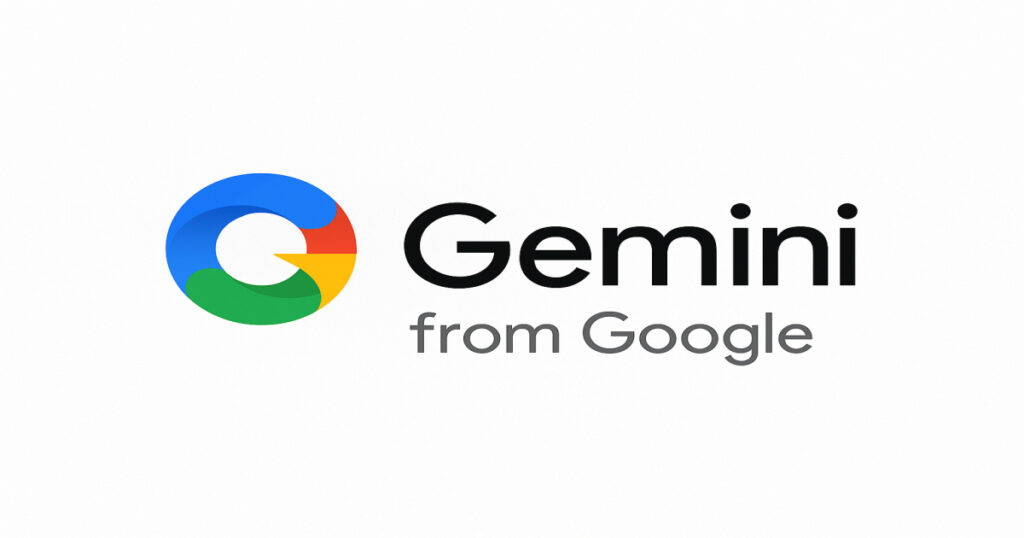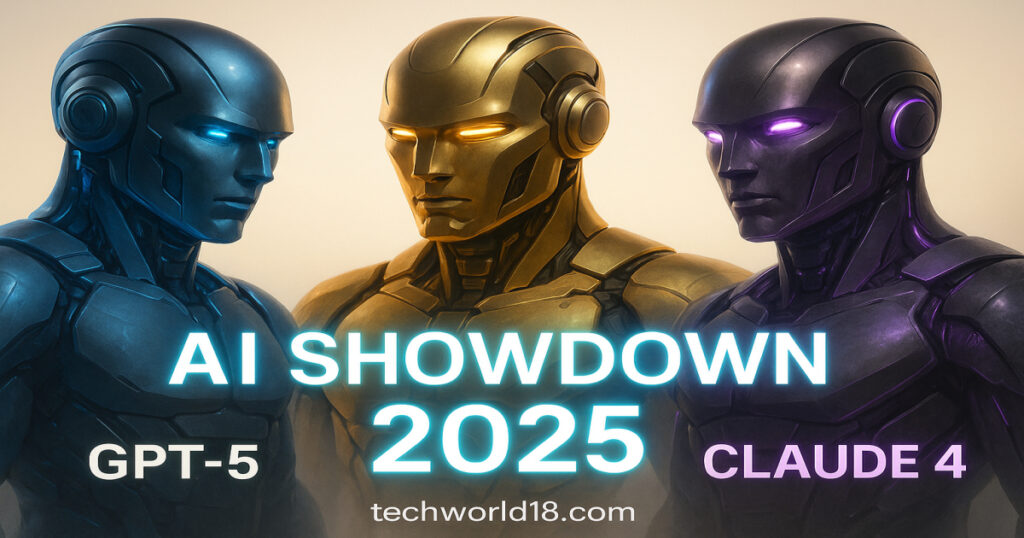Google’s Gemini Robotics On-Device AI: The Future of Robots Without the Cloud: Imagine a future where robots no longer rely on cloud servers to function—where they can see, think, and act instantly, right where they are. No more delays. No more privacy concerns. Just pure, autonomous intelligence at the edge.
Thanks to Google DeepMind’s groundbreaking innovation, that future is here.
With the introduction of the Gemini Robotics On-Device AI model, Google is setting a new benchmark for robotic autonomy and AI hardware integration. This cutting-edge model runs directly on robots, unlocking lightning-fast performance, rock-solid privacy, and near-human dexterity—all without needing an internet connection.
In this guide, we’ll explore everything you need to know about this transformative technology: what it is, how it works, where it’s being used, and why it’s reshaping the robotics landscape for developers, businesses, and AI enthusiasts alike.
What Is Gemini AI? Understanding Google’s Vision-Language-Action Model
At its core, Gemini AI is Google DeepMind’s most sophisticated vision-language-action (VLA) model to date. Unlike traditional AI systems that focus on narrow tasks, Gemini integrates visual understanding, natural language processing, and physical manipulation—within a single unified model.
Key Features of Gemini AI
- Multimodal Intelligence: Simultaneously processes images, text/audio, and actions.
- Embodied Reasoning: Understands physical environments and object interactions.
- Rapid Generalization: Learns new tasks with minimal examples—no massive retraining needed.
What Can Gemini AI Do?

Google’s Gemini AI is not just a theoretical breakthrough—it’s a functional system powering real-world robotic intelligence.
While many AI models remain confined to research papers or lab environments, Gemini AI stands out by bridging the gap between innovation and practical application. It has already demonstrated its capabilities in physical tasks across various industries—from preparing meals and folding clothes to assembling parts on industrial lines. This means the technology isn’t just promising on paper—it is actively driving meaningful automation in dynamic, real-world settings. By merging vision, language, and action into a unified on-device model, Gemini AI has transitioned from concept to a tangible, scalable tool that enables robots to perceive, understand, and interact with their surroundings independently. It’s not just about futuristic robotics—it’s about what’s happening right now, in homes, warehouses, hospitals, and factories.
Real-World Tasks Gemini-Powered Robots Can Perform
- Prepare complex meals like salads and lunch boxes: Demonstrates advanced manipulation and task sequencing.
- Play interactive games (e.g., Tic-Tac-Toe): Engages in decision-making and visual feedback processing.
- Fold intricate origami shapes: Requires high-level dexterity and spatial understanding.
- Assemble items on industrial production belts: Showcases adaptability in dynamic work environments.
Best Use Cases for Gemini Robotics On-Device AI
Here’s where Gemini On-Device AI is most impactful:
1. Manufacturing & Assembly
- Seamless adaptation to new workflows
- Less downtime with minimal retraining
- Ideal for dynamic production lines
2. Healthcare & Elder Care
- Handles sensitive tasks like sorting medication or assisting patients
- Keeps private health data on-device, enhancing privacy
3. Logistics & Warehousing
- Detects new objects or layout changes in real time
- Efficient in fast-moving environments
4. Home Automation
- Learns household routines
- Maintains full functionality offline—no cloud sync needed
5. Remote or High-Security Areas
- Operates autonomously in places without internet
- Ideal for disaster zones, military bases, or rural settings
Why Is On-Device AI a Breakthrough in Robotics?
Traditional AI relies on cloud infrastructure, which introduces:
- Latency
- Privacy vulnerabilities
- Connectivity dependency
Gemini Robotics On-Device AI flips that model by running directly on local hardware, providing:
- Instant Decision-Making: No delay from cloud-based computation.
- Offline Operation: Works without needing continuous internet access.
- Full Data Privacy: Keeps sensitive data within the robot.
- Greater Autonomy in Challenging Environments: Ideal for areas with no or unstable internet.
- Vibe Coding in 2025: Build Apps with AI and Turn Prompts into Profit
How Does Gemini Robotics On-Device AI Work?
Google has engineered Gemini’s on-device version to be compact yet powerful, retaining most of the cloud-based model’s capabilities in a smaller footprint.
Despite its reduced size, the performance gap is surprisingly minimal, according to Google’s internal testing.
Model Capabilities and Performance
1. Out-of-the-Box Intelligence
Gemini On-Device AI doesn’t require extensive training. Robots can execute new tasks after just 50–100 demonstrations—a radical departure from models that demand thousands of data samples.
2. Dexterity and Embodied Reasoning
Robots using Gemini AI can:
- Identify parts of objects
- Track coordinates in 3D space
- Fold clothes and manipulate items fluidly
These advanced abilities enable fine motor control and real-world reasoning—key to effective robotic automation.
3. Performance Benchmarks
In Google’s benchmarks:
- The on-device Gemini model nearly matched its cloud-based sibling
- It outperformed other edge-device AI models in speed, accuracy, and adaptability
This means top-tier robotics AI performance—no cloud required.
Adaptable to New Tasks, Generalizable Across Robot Types
1. Few-Shot Learning
Gemini’s ability to learn from just a few examples means faster deployment and easier adaptation to real-world use cases.
2. Cross-Platform Flexibility
Originally trained on Google’s ALOHA robot, Gemini On-Device has been successfully adapted for:
- Apptronik’s Apollo humanoid robot
- Franka FR3 bi-arm robot
- Other leading platforms in research and industry
Its modular design allows seamless integration across hardware ecosystems.
Built for Dexterity and Speed—Without the Cloud
1. Real-World Applications
- Folding clothes and unzipping bags: Demonstrates real-time object manipulation and tactile reasoning.
- Assembling parts in real-time on industrial lines: Proves effectiveness in high-speed, precision-heavy environments.
These tasks demonstrate how Gemini AI handles unstructured environments and new object types—a major leap in robotic generalization.
2. Why Dexterity Matters
Dexterity has long been a barrier in robotics. Tasks like folding, sorting, or precise assembly require both:
- Complex spatial awareness
- Refined motor coordination
Gemini’s embodied reasoning pushes robots closer to human-level physical intelligence—without relying on external computation.
Works Across Robot Platforms: Franka FR3, Apollo, and More
Thanks to its adaptable architecture, Gemini Robotics On-Device AI integrates seamlessly with multiple hardware platforms:
- Apptronik Apollo – multipurpose humanoid robot for industrial tasks
- Franka FR3 – precise dual-arm robot ideal for manipulation
- Custom platforms – supports wide range of hardware via Gemini SDK
This makes it a universal AI solution for the robotics industry.
Developers: Access Gemini via the Safari SDK
Google DeepMind has launched the Safari SDK for developers building with Gemini Robotics AI.
Key Developer Details:
- Availability: Limited to Google’s Trusted Tester Program (for now)
- Installation: Available on PyPI—install via pip install safari_sdk
- Functionality: Supports model serving, task evaluation, fine-tuning, and data logging
- Open Future: Full release expected to broaden access to global developers
How to Get Started
- Apply for Trusted Tester Access
Join Google’s developer program for early access. - Install the SDK
Set up via Python with pip install safari_sdk. - Integrate With Your Robot
The SDK supports plug-and-play development for multiple platforms.
Frequently Asked Questions (FAQs)
1. What makes Gemini Robotics On-Device AI different?
It runs locally on the robot—offering offline performance, increased speed, and total privacy.
2. Can it learn new tasks easily?
Yes. Gemini uses few-shot learning to master tasks from just 50–100 demonstrations.
3. Which robots are compatible?
Gemini supports ALOHA, Apollo, Franka FR3, and many more via its SDK.
4. Is the SDK open to the public?
Currently, access is limited to trusted testers, but a public rollout is expected soon.
5. What about data security?
Developers must implement their own security protocols, as Gemini does not include built-in encryption or protection layers.
Conclusion: The Dawn of Truly Autonomous Robots
Google’s Gemini Robotics On-Device AI is more than a model—it’s a paradigm shift in how robots think, act, and learn.
By eliminating the need for cloud dependency, Gemini enables robots to operate:
- Faster
- More privately
- In more locations
- With less training
Whether you’re a developer building next-gen robots, a business leader exploring automation, or an AI researcher, Gemini represents a game-changing leap toward real-world AI autonomy.
Ready to Build Smarter Robots?
Apply for access to Google’s Gemini SDK and start experimenting with on-device AI today.



I think this web site has got some rattling wonderful info for everyone :D. “A friend might well be reckoned the masterpiece of nature.” by Ralph Waldo Emerson.